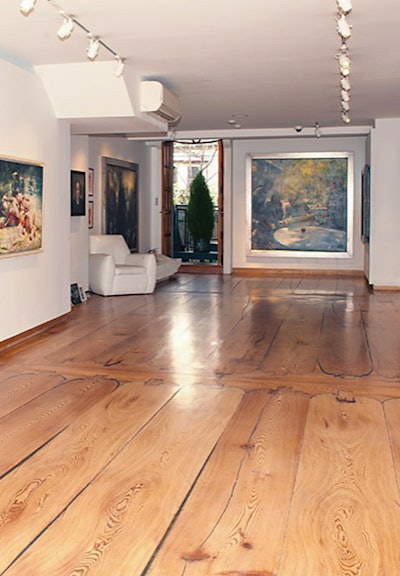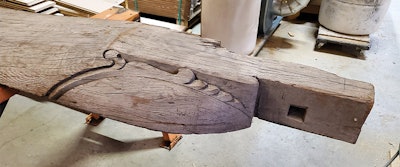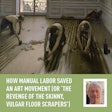


It was a sight to move a floor pro to tears: antique wood sitting in a pile in the middle of an open field in Pennsylvania. "All of us woodworkers, we almost cried because it was all covered in ice and snow," says Andrew Phillips of NYC-based The Hudson Company. The story of how the wood wound up there begins in China during the Ming Dynasty (1368–1644), when the temple it originated from is believed to have been built. In the mid-1990s, a dam project in the Hubei province forced nearby buildings to relocate, and sections of the temple ended up with a private collector in the U.S. The Hudson Company rescued the material, believed to be a kind of cypress, in 2005 and air-dried it. Galleri Sand, an art museum, later approached the company to mill it into flooring. The company resawed the material, which was approximately 20 inches in diameter and 20 feet long, into quartersawn boards and planed them, keeping the tenons on the ends. "We did as little as we could to them," Phillips says. "It was like working for the Smithsonian." The boards were cut 12–14 inches wide and 14–18 feet long. Their installation signaled a happier ending from the icy state they were discovered in. "It was almost a little awe-inspiring to everyone who saw it," Phillips says.
RELATED: Spellbinding Reclaimed End Grain Aims for Old-World Look






































